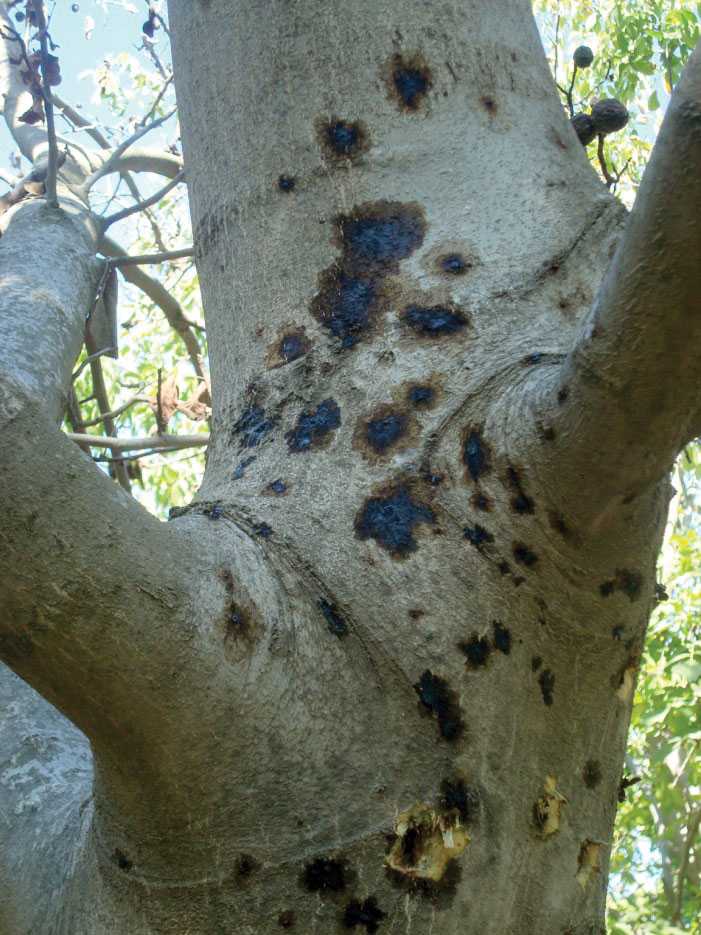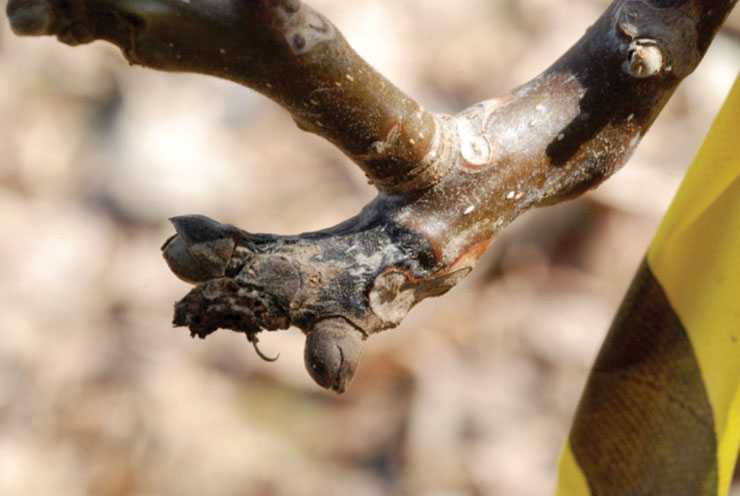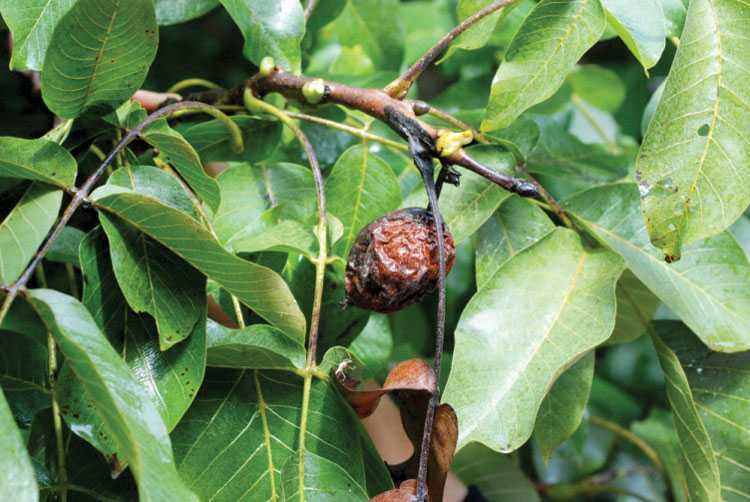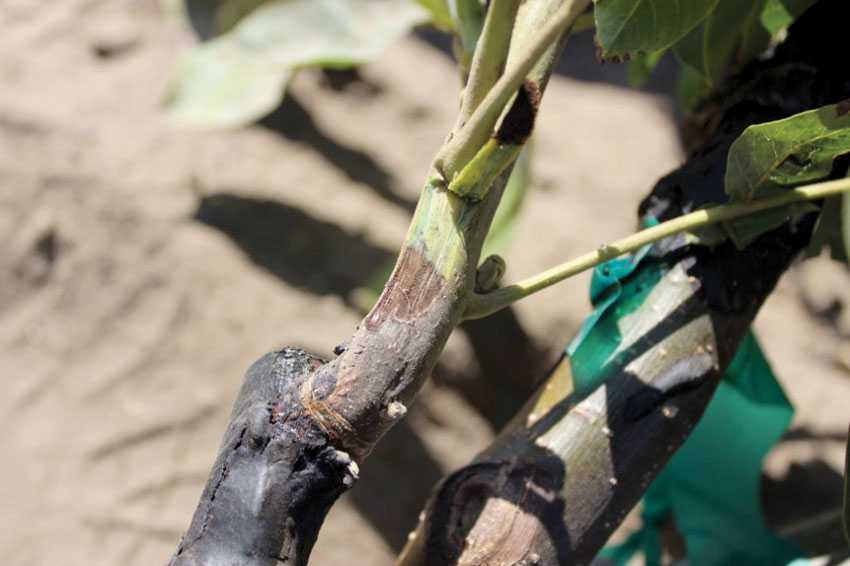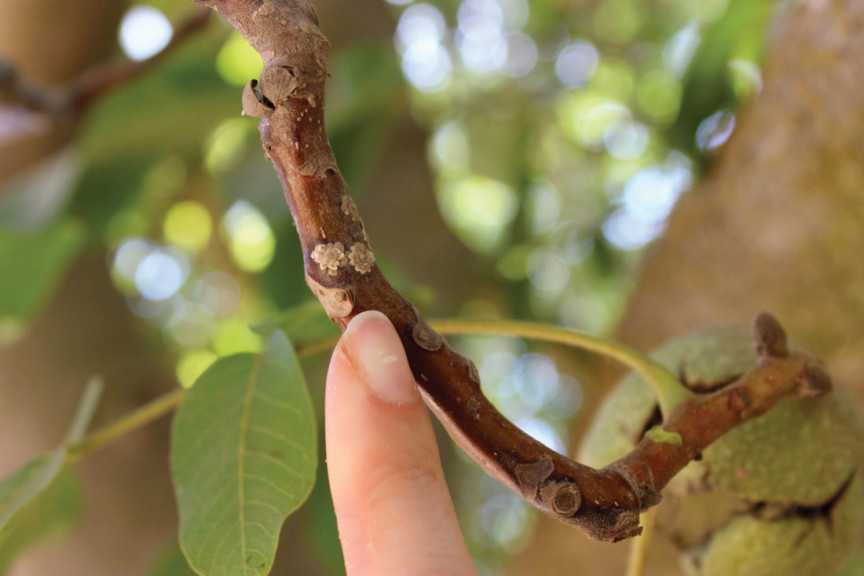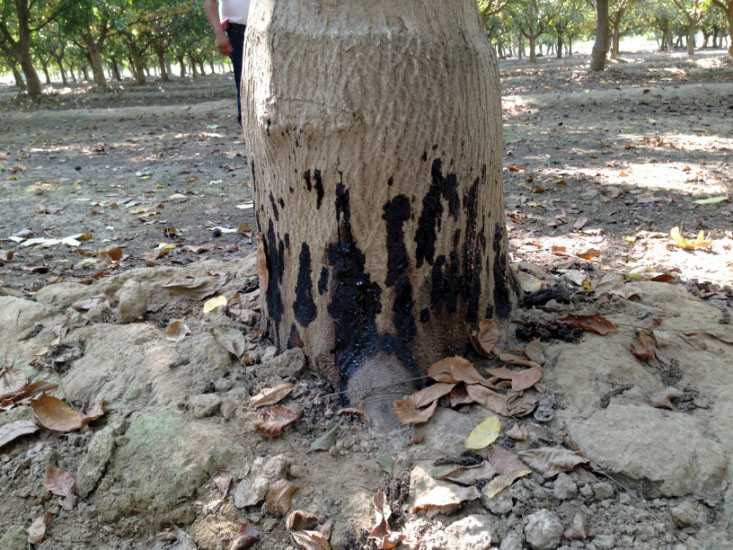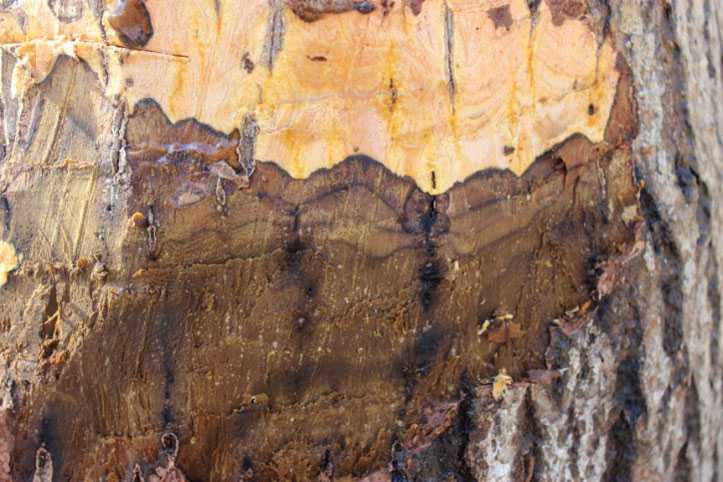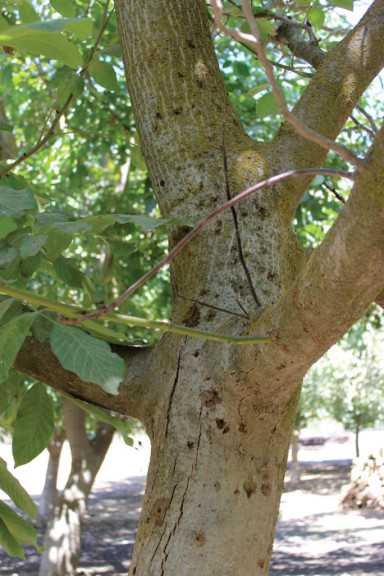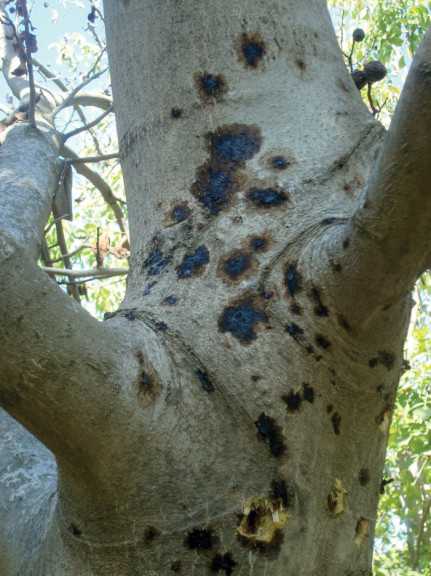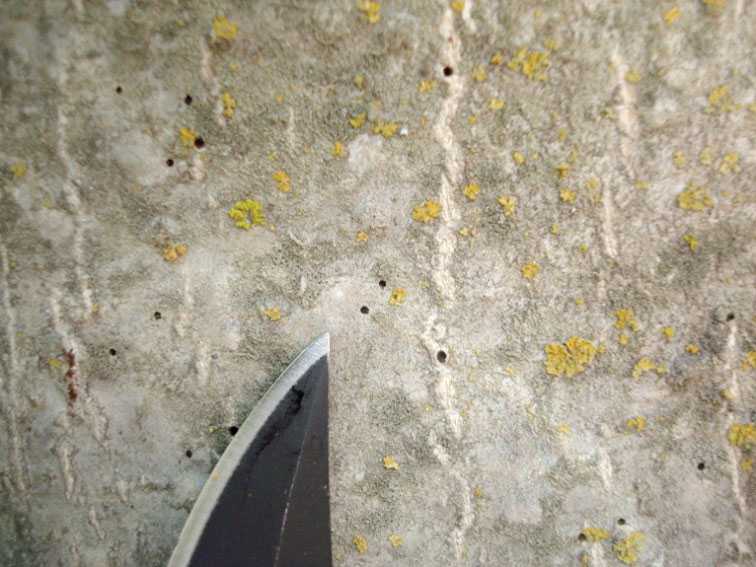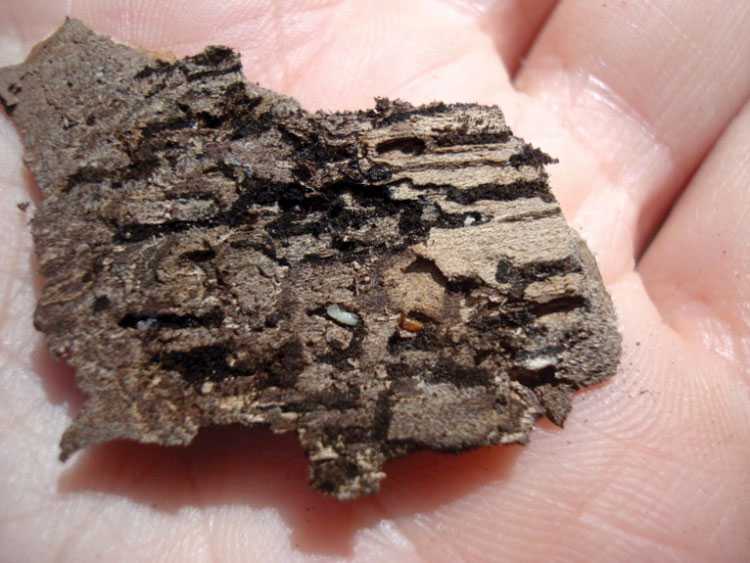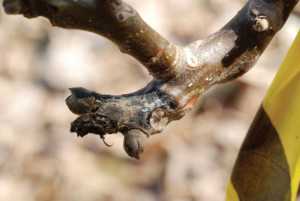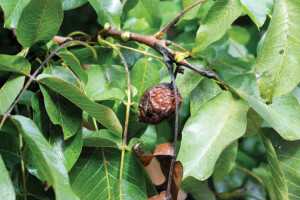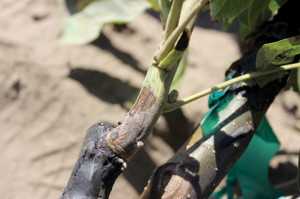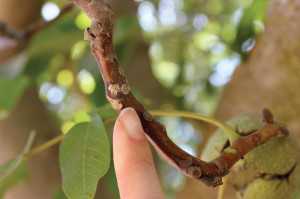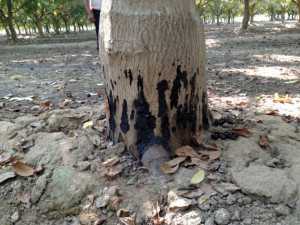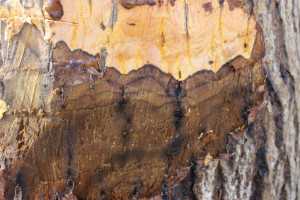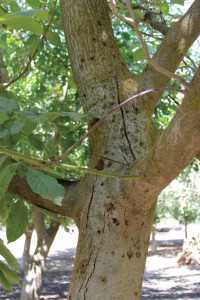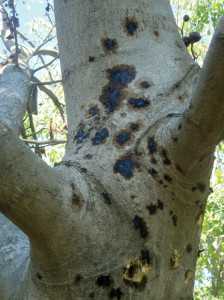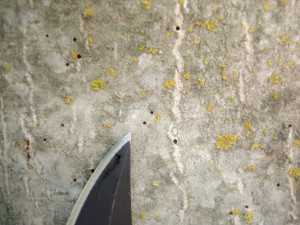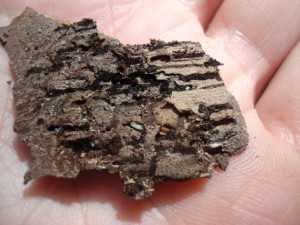Emerging Diseases Threaten Walnuts
[blackoutgallery id=”58301″]
Editor’s Note: Others contributing to this article include: Themis Michailides, Ravi Bhat, and Richard Bostock of the UC-Davis Department of Plant Pathology; Greg Browne, USDA-Agricultural Research Service (ARS); Janine Hasey, UCCE Sutter-Yuba Counties; and Steven Seybold, USDA Forest Service
The value of California walnuts has grown more than four-fold over the past decade and currently exceeds $1 billion in annual harvest value. While production and value continue to rise, growers’ concerns over the potential impact of three emerging canker diseases continue to increase as well.
Botryosphaeria/Phomopsis cankers, lethal Paradox canker (LPC), and thousand cankers disease (TCD) have been observed throughout the walnut growing regions of California, with each disease causing distinct symptoms on affected trees. University of California-Davis, University of California Cooperative Extension (UCCE) and USDA researchers continue to investigate the etiology and epidemiology of these diseases to mitigate the potential economic and agro-ecological impact on California walnuts.
Botryosphaeria/Phomopsis Cankers
Although these fungi are common in California orchards, their association with significant walnut disease became evident during the unusually wet 2010 season. Botryosphaeria canker is not new to California nut crops; management of panicle and shoot blight on pistachio may cost growers up to $1,000 per acre in wet years. Botryosphaeria and Phomopsis cankers have also caused significant damage to walnuts in Spain.
Several species of fungi in the family Botryosphaeriacae, as well as some species of Phomopsis, have been associated with branch dieback and bud mortality, and shoot and fruit infections on California walnuts. Until recently, the typical canker and dieback symptoms associated with these fungi have largely been attributed to shade-out; however, growers, pest control advisors and UCCE farm advisors have increasingly observed dieback in the external and upper canopy where sun exposure is not limiting. In 2013, 84% of walnut samples submitted to the Michailides laboratory at Kearney Agricultural Research and Extension Center in Parlier, CA, were found to harbor Botryosphaeria and/or Phomopsis.
Several of these fungi have since been proven to cause both stem and fruit infections on walnut. Symptoms are easiest to identify during the growing season when dead twigs and branches are distinct from those bearing fruit and leaves. During the winter dormant season, dead branches remain indistinct and the observation of discreet canker margins on twigs (Figure 1A) is difficult in tall trees.
Occasionally however, some infected twigs will have blighted leaves and fruit hanging on the trees.
Both pathogens may survive in infected tissues, including flower buds and twigs. Walnut husks and prunings on the orchard floor have also been found to harbor the pathogens, but their role in the disease cycle may be mitigated by removal from the orchard. Similarly, pruning of infected twigs and branches may reduce primary inoculum on trees. Under moist conditions, these fungi produce asexual spores that can be transmitted in water splash, as well as airborne sexual spores.
The pathogens can initiate new infections when transmitted to uninfected tissues, including the cut surfaces formed during hedging and grafting. They have also been found to colonize blighted husks and cause higher canker incidence and severity on shoots infested with walnut scale, an insect generally regarded as a non-economic concern on walnut. Trials have been established to address the efficacy of fungicides for management of Botryosphaeria and Phomopsis cankers on walnuts and preliminary results suggest that some compounds reduce pathogen levels in shoots, husks, and peduncles.
Lethal Paradox Canker
Growers have also been challenged by a canker disease that causes overall tree decline and mortality by infection at the root crown and trunk base. This disease is generally limited to infection of the hybrid Paradox rootstock, hence the name “lethal Paradox canker.” On the surface, the symptoms of LPC are similar to those of Phytophthora infection, with a dark, viscous ooze observed at the base of the tree. When the bark is peeled away, however, LPC symptoms are distinct from those caused by Phytophthora.
The cankers associated with LPC tend to be more “rounded” or “lobed” at their margins than those caused by Phytophthora, which often have relatively “angular” or “pointed” advancing margins. Also, LPCs usually exhibit concentric “growth rings” near advancing edges of the necrotic tissue. Early symptoms of LPC may include small bleeds on the rootstock and canopy decline, but the canker will girdle the tree and cause mortality.
LPC is thought to be a disease caused by a microorganism; however, a causal agent has not yet been resolved. The cankers do not readily or consistently yield culturable microorganisms, so creative approaches are required to investigate the cause. Leading the research efforts, the Browne Laboratory with USDA-ARS has sampled symptomatic trees throughout the state to examine associations between the disease and possible pathogens. In 2013, UCCE Tulare County mapped LPC incidence in orchards and are continuing to monitor the spatial and temporal spread of the disease within affected sites.
Thousand Cankers Disease
Over the past decade, TCD has been associated with decline and mortality of Eastern black walnut and other walnut species in several Western states. Although Eastern black walnut is native to the eastern United States, it has been planted extensively in landscapes in Western states and occasionally serves as a rootstock for commercial production of English walnut in California. In 2008, the disease was first observed in California on Northern California black walnut. By the close of 2009, however, TCD was found in commercial walnut plantings in several counties in California.
The disease, caused by the fungus Geosmithia morbida, is vectored by the walnut twig beetle, an insect specific to walnut and closely related tree species. The beetle is small in size (less than 2 mm), but can mass attack tree stems and branches by tunneling through the bark. The beetle introduces spores of the pathogen to the phloem where the fungus causes necrosis and subsequent canker development.
A proportion of the beetles carry the fungus into the tree; the result is tree decline and potential mortality from the myriad of cankers that may coalesce over time (hence the name thousand cankers disease). Symptoms may vary among trees, with staining or bleeding appearing faint or dark. Sometimes the beetle entrance and emergence holes are present in the absence of staining, particularly on trees in late stages of decline. A casual observer may not differentiate TCD from shallow bark canker, a largely superficial disease. Positive identification of TCD relies on association of the walnut twig beetle with cankers; the fungus appears to be unable to penetrate the outer bark without the entrance hole created by the beetle.
Since 2010, TCD has been reported in three eastern states: Tennessee, Virginia, and Pennsylvania. Because successful infection of the host relies on the pathogen’s association with the walnut twig beetle, efforts to detect new outbreaks of disease in uninfested areas, including native- and agro-ecosystems, depend on early walnut twig beetle detection. Since 2009, UCCE has cooperated with the Seybold Laboratory, USDA Forest Service, to test beetle trapping methods for development and implementation of the current nationwide trapping system. The development of these traps facilitated the 2012 detection of the walnut twig beetle near a wood processing facility in Ohio.
To devise integrated management strategies, researchers are investigating the biology and phenology of the walnut twig beetle as well as the geographic distribution of the disease in California orchards. The Bostock laboratory at UC-Davis together with UCCE are conducting extensive surveys of disease distribution in English walnut orchards throughout the state and assessing susceptibility to the pathogen in various Juglans species of interest to rootstock breeding.
In addition, UCCE farm advisors have been monitoring the seasonal flight activity of the beetle in several of California’s walnut-growing regions. The results demonstrate reduced beetle activity during the winter months, suggesting that removal of infected trees should be completed as a dormant-season activity, prior to the advent of warming weather in the subsequent growing season.
Additionally, a USDA Forest Service/UCCE study in Tulare County demonstrated that infested logs can serve as a beetle source throughout the growing season, with peak beetle emergence occurring in late June. The results also underscore the potential role of firewood in long-distance disease transmission. In a USDA Forest Service/UCCE Sutter County study, fungicide-stimulants and insecticides tested did not show an immediate reduction of the disease, suggesting that chemical treatments alone are unlikely to control TCD.
For more details on all three diseases, refer to the Walnut Research Reports, published on the UCD Fruit and Nut Research and Information Center website.




